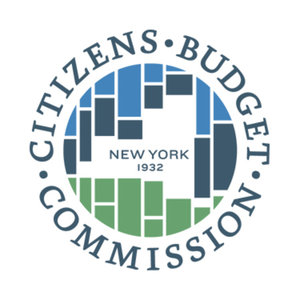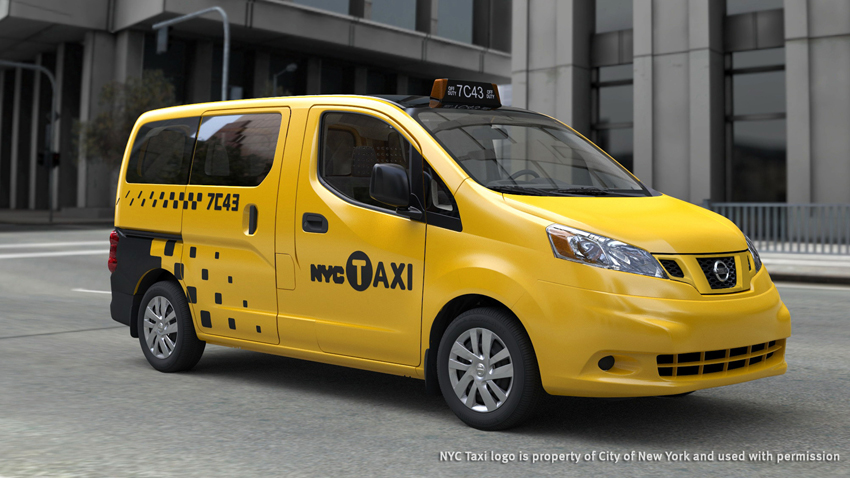 Let’s start with a premise that not everyone seems to accept: The MTA and Uber — along with the MTA and green taxis, yellow taxis and your favorite local car service — aren’t really competitors. While the recent spike in volume of black taxis due to Uber is problematic for other reasons, these two services aren’t competing, as Cap’n Transit recently detailed, for the same dollars these days.
Let’s start with a premise that not everyone seems to accept: The MTA and Uber — along with the MTA and green taxis, yellow taxis and your favorite local car service — aren’t really competitors. While the recent spike in volume of black taxis due to Uber is problematic for other reasons, these two services aren’t competing, as Cap’n Transit recently detailed, for the same dollars these days.
That doesn’t mean, in a somewhat twisted way, Uber can’t be helpful to the MTA, but it does mean you should raise a very skeptical eyebrow at coverage that says Uber is “costing the MTA dearly.” When that coverage then that states that “dearly” means $1 million a year — which is around 0.007 percent of the MTA’s annual operating budget, you should just laugh it off as uninformed tabloid sensationalism. But I digress. Let’s talk about taxis and the MTA’s finances.
For a few years, the state has collected a 50-cent surcharge on every yellow and green taxi ride, and this money goes toward the MTA’s finances. One of the reasons revenue has dipped from $48 million annual to $47 million is because Uber has eaten into these cabs’ shares of rides. Now, as the MTA faces a significant budget gap and the state and the city will have to implement something to generate dollars, the Citizens Budget Commission, as part of its effort to promote a 50-25-25 MTA funding plan (where fares cover 50%, taxes 25% and cross-subsidies from cars 25%), has put forth a call to tax all subway rides. You can read the full policy brief right here. Here’s the meat of it in three proposals:
Expand Coverage of Per-Ride Taxicab Tax. The current 50-cent per-ride taxicab tax is intended to charge riders, who do not necessarily pay other cross-subsidies from vehicle ownership, for the negative externalities of their trips. By this logic, applying the tax to all black car trips, including DSPs, would have raised an additional $33 million in 2015. This amount would grow to between $34 million and $55 million by 2019.
Increase and Expand Per-Ride Taxicab Tax. When the taxicab tax was instituted in 2011, it represented approximately 4.73 percent of the average taxi fare. After increases in taxicab fares, the figure is 3.95 percent today. If the tax applied to black cars, including DSPs, were set at a rate, rather than an amount (50 cents), then the tax would be 3.95 percent of the fare. With black car fares averaging more than $27, their average tax would be about $1.00 rather than 50 cents. This new tax on black car riders would have generated an additional $70 million in 2015 and between $73 million and $117 million in 2019.
Transportation Sales Tax Reform. A third option is to lower the burden on black car riders and dedicate the entire tax to the MTA. The new rate could be set sufficient to close the MTA funding gap; a rate of 5.75 percent, assuming that current trends in the industry continue to 2019, would cover debt service on $2.6 billion of borrowing. While this option would require the State and City to forfeit sales tax revenue from this industry, it would fund the shortfall in the MTA’s capital plan and provide a likely growing revenue stream for this purpose from both jurisdictions.
It’s easy to misinterpret this report as an attack on Uber, as Uber is mentioned 30 times while yellow, green and livery cabs are mentioned a combined 40 times, but it’s not an attack on Uber as much as it is a challenge to allocate funds in a way that captures the negative externalities of auto trips on surface streets in New York City. To that end, one of these proposals should be implemented, and I’d lean toward the third option as it would generate sufficient revenue for the MTA to fund debt service for capital plan borrowing.
A final idea comes to us from Stephen Miller at Streetsblog. He calls upon the city and state to implement a variable surcharge on taxi rides that would mirror a congestion pricing scheme. “Ideally,” he writes, “the surcharge paid by yellow taxis, Uber, and other for-hire services would be higher in the congested Manhattan core than in outer-borough neighborhoods lacking decent transit service. While that wouldn’t be a substitute for real congestion pricing of all motor vehicle trips, it could set a precedent and demonstrate the impact of congestion-based fees on a substantial portion of Manhattan traffic.” This too seems to me like a no-brainer if we want to combat congestion while generating money for the MTA.
Ultimately, these CBC proposal and Miller’s plan are ideas that will have to be addressed by city and state politicians who have been challenged to fund the MTA’s capital plan gap. We’ll hear more about the political battles as the fall unfolds, but right now, during summer, the ideas are percolating appropriately.



